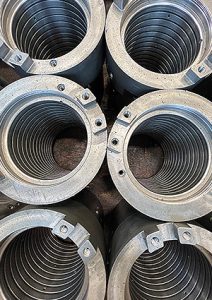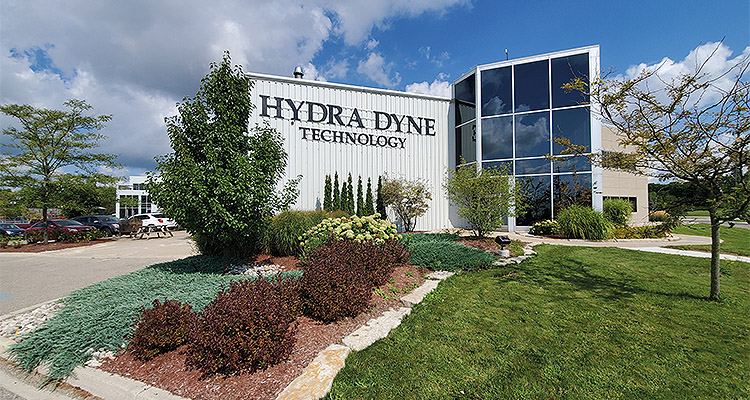Hydra Dyne Technology Inc tells us about its latest success story
Hydra Dyne Technology Inc. (Hydra Dyne) started in 1992. Initially, the Canadian company focused its services on repairing hydraulic products, however, it quickly began to manufacture its own.
By the end of the 1990s, Hydra Dyne had transitioned into developing control manifolds, and in 2003 the firm released its famous lock seal design for rotatory manifolds.
For Steve Bohner, President at Hydra Dyne, the ingenuity of the design has carried the company through multiple recessions and market corrections. “It’s the main reason why customers keep coming to us,” he says.

More recently, the company has ventured into cylinder positioning, a particularly significant development because of applications to autonomous vehicles (AVs), which Steve contends will be the most critical product for Hydra Dyne going forward.
Talking of the future, Hydra Dyne has also been busy transforming its digital software, a process that began back in 2016. “We’ve been on a journey to digitize all our manufacturing capacity,” explicates Steve.
“Not only has this made processes much more efficient, but it also means that we can rapidly onboard young talent, who will then, in turn, be more productive. Today, digitization is an essential part of business, especially if you want to keep your current workforce.”
As the mythological hydra has many heads, so too does Hydra Dyne. The clue’s in the name. One head is in construction, another’s in forestry, while others can be found in agricultural markets. Labor shortages, though, have prevented the company from expanding further.
“People age,” says Steve. “You can’t get away from it. To counter that, we’re investing in AVs, smart technology, and other measures. That way, you can continue to grow.”
And over the last three decades, Hydra Dyne certainly has. “Since 1992, our view on expansion has remained the same,” he goes on. “On the sales-to-employee ratio, we’ve certainly grown – well over ten times, in fact.
“We don’t see this stopping. In the next ten years, we’ll probably increase today’s figure by tenfold again! But ultimately, that’s necessary. We must increase productivity rates significantly, otherwise we’ll not survive.
“What we focus on above all else is service,” Steve adds. “In our industry, customers are our priority, and we pride ourselves on a ten-day ship rate. It’s important that we maintain it because our customers really value that service, especially since it reduces their inventory – a service that is almost unheard of in the industry.”
Design is also high on the agenda. “Our design capabilities are exemplary,” declares Steve. “Customers come to us because they know we can meet their specific machinery component needs. We’ll design a part for their specific machine, and that tailor-made process really sets us apart. It’s one of the reasons why customers trust Hydra Dyne.”
Innovative technology
Earlier this year, the Ontario-based company attended CONEXPO-CON/AGG, North America’s largest construction trade show. Representing areas of the industry including asphalt, aggregates, concrete, earthmoving, lifting, mining, utilities and more, the event aims to showcase the latest equipment and technologies.
It was a perfect opportunity for Hydra Dyne to unveil a new product – one that was ten years in the making. “CONEXPO-CON/AGG was a great time,” reflects Steve. “We showed everyone our new cylinder positioning technology, which David Brooks, our Director of Electrical Engineering, has been working on.”
We’ll hear from David in a moment, but first, Steve talks us through the development process in detail. “I had the idea about a decade ago, and in the last 18 months, David’s been thinking it through,” reveals Steve. “Unfortunately, David found some holes in my design! Thankfully, we found other ways to perfect the original idea.
“Cylinder positioning is typically done with temposonic-type probes, which are very prone to damaging during construction. Indeed, the integrity of the cylinder gets weakened over time in traditional systems and it’s not very serviceable if something goes wrong.
“It’s very complicated in that sense, I suppose, and very expensive to install,” he goes on. “So what we have targeted is a medium-cost product that is very accessible, and the components are interchangeable. This means there is very little structural compromise with the cylinders.”
David explains further: “There are no components in the system that are in high-pressure areas of the cylinder at all. In fact, the entire system is integrated into the low-pressure, clean area of the gland.

“Consequently, we avoid any kind of ingress into that high-pressure area,” he continues. “We don’t have to gun drill the rod, and therefore we don’t compromise the structural integrity of the cylinder in any way, shape, or form. We’re now looking to scale the product in a cost-effective and high-value manner.”
We’ve talked a lot about the products side of the business. But what kind of culture is being cultivated behind the scenes? “We have various levels of competency within the group,” explains David. “But, for us, safety always comes first.
“We’re very cautious about how safe we keep the environment; we want to make sure everybody understands the process and that everybody is trained to the highest level. Indeed, an overall culture of safety is essential.
“As we are in the manufacturing industry, there is, of course, a lot of focus on continuous improvement,” he goes on. “Over the last 30 years, we’ve made necessary changes in both our people and product, and that’s been a central part of transforming our working culture.
“Of course, teamwork and collaboration is a must in an industry such as this. Everything has to follow a plan; there’s a lot of cross-function interaction, which is a big part of the way we work. It’s not only a key differentiator for us but an important part of our success story.”
A new success story
Empowering a team and delegating tasks is another important part of David’s internal strategy. “It helps employees to own their tasks and take responsibility,” he says. “But we’ll always be there to celebrate smaller successes because that’s the part of our work everyone can enjoy.
“With us, it’s all about quality,” adds David. “We make sure everyone is aligned with that; it’s practically our mission. A lot of emphasis is given on training to make that happen, and again we have a lot of unique facilities within North America. These enable us to make sure everything is manufactured in-house – right the way from raw material to finished product.
“There are so many steps involved, and converting that into a finished product of high quality is a hard step at every stage. We really have to cultivate that culture of delivering quality to bring all of this together.
“At the end of the day, though, I’d say that the key is actually good, open communication, as well as trust from the executive team. They need to know exactly what’s being talked about on the shop floor.”
In five years, the pair expect sales to increase by 50 percent, an ambition which will be aided by new technology due out soon. Otherwise, says Steve, the focus will be on energy conservation. Updating technology to become even more efficient will play a large role in this goal.
Steve and David are passionate. That’s for certain. Another certainty is that Hydra Dyne is on a new success story, to borrow David’s phrasing. This new journey is defined by, as before, a high-quality product, but this time one that’s truly breaking new ground in the industry.

